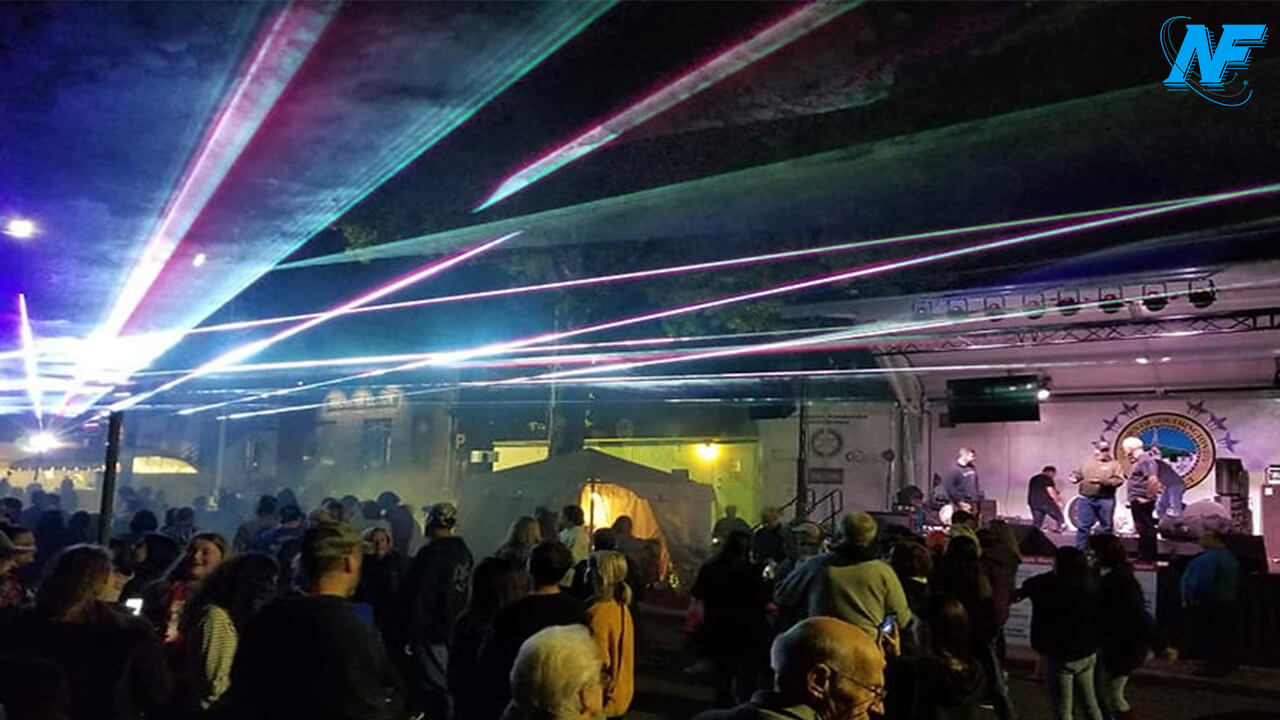1. What's the Significance of Laser Safety?
Ensuring laser safety should be the top priority in any laser show presentation. While lasers can produce remarkable effects, it is crucial to maintain their safety throughout the presentation. A failure in the production aspect affects only your credibility and potentially your finances. However, a failure in laser safety can have more serious consequences, including the potential for causing permanent eye injuries.
2. Why Are Lasers Hazardous?
Lazer lights is coherent, meaning that all its energy travels in the same direction and phase, in contrast to sunlight or light from a regular bulb. This coherence allows laser light to remain concentrated over long distances, creating impressive lighting effects. Yet, when used without caution, lazer lights can pose a risk for direct exposure. In such cases, the human eye can focus this light onto a minuscule spot on the retina, which means that even a few milliwatts of visible laser light can result in permanent eye damage.
3. Legal Responsibilities of Laser Users in Europe
Laser equipment in Europe must adhere to the laser product safety standard EN 60825, which mandates the inclusion of specific safety features. At
NEWFEEL, we diligently ensure that our laser projectors meet this standard. Individuals using lasers and exposing others to laser radiation bear legal responsibility for their actions. According to current European law, it is prohibited to subject others to excessive laser radiation, where "excessive" is defined as exceeding the Maximum Permissible Exposure (MPE) limits.
4. Essential Laser Safety Terminology
Audience scanning refers to the deliberate direction of laser light or its reflections towards the heads of the audience. To safely perform audience scanning, one requires a substantial amount of knowledge and experience, along with the appropriate testing equipment for accurate laser safety assessment.
Maximum Permissible Exposure (MPE) denotes the highest level of visible laser radiation that is considered safe within a specific duration of exposure. In numerous European countries, compliance with these exposure limits is often a legal requirement. The MPE is set at 25.4W/m2 for a duration of 250 milliseconds, which is equivalent to 1mW over a 7mm circular aperture (the size of the human pupil). For shorter exposure times, particularly during rapid beam scanning with adequate scan-fail detection, higher limits can be considered.
Exposure levels exceeding 25.4W/m2 are associated with greater risk and should be used cautiously, with a clear understanding of what is still considered acceptable.
Nominal Ocular Hazard Distance (NOHD) represents the safe distance between an individual and a laser projector emitting a single beam at full power for less than 250ms. As an illustration, our lowest power system, the ClubMax 800, generates 800mW of laser power. Even for this relatively small system, the NOHD is an impressive 273 meters for a stationary beam.
5. Laser Placement Guidelines
There are established guidelines for the placement of any laser system. Among these, the most crucial rule is to position the system so that the vertical separation distance between any effect exceeding the MPE and the highest point of audience access is no less than 3 meters.
Furthermore, the horizontal separation distance should be a minimum of 2.5 meters from any area accessible to the public if the effects exceed the MPE. The laser system must be securely fixed in place to prevent any accidental movement.
6. Laser Pointers
We are all aware of the hazards associated with laser pointers when directed at aircraft. If you are caught aiming a laser at an aircraft, regardless of whether it's a simple laser pointer or a larger laser system, you are likely to face legal consequences, possibly even imprisonment. Laser pointers, when in the hands of individuals who use them for amusement in public spaces, can be extremely dangerous. Many of these pointers emit a level of power that can result in blinding or causing permanent eye damage to individuals at a considerable distance. Never gaze directly into the beam of any laser pointer.
7. Records for Laser Light Projector Safety
For any event employing laser technology, it is essential to compile a comprehensive document that outlines the safety measures specific to the installation and production of the laser show. This document should be submitted to the venue owner or manager and reviewed by the local Laser Safety Officer (LSO), who must give their approval. This process demonstrates compliance with the most current legislation and affirms that the planned laser activities are safe for the audience. Moreover, having such a record can be invaluable should someone falsely accuse you of causing laser-related harm to people or property.
8. SafetyScan Lenses
SafetyScan lenses, manufactured by
NEWFEEL.These lenses increase the beam divergence, reducing the power concentration of the laser light, thus enhancing the safety of audience scanning. However, it's important to note that using these lenses does not guarantee the overall safety of the show. It's crucial to fully comprehend how they function before implementing them.
9. Enhancing Laser Show Safetys
A. Gain a comprehensive understanding of the issues by attending safety training, conducting online research, and learning from experienced individuals.
B. Avoid scanning the audience unless you are absolutely certain that your actions are completely safe.
C. Adhere to basic rules when positioning the
laser light projector and never compromise safety for any reason.
D. Employ physical barriers to restrict laser beam areas to areas where they are intended to go.
E. Utilize
laser light projector only from reputable and well-known manufacturers.
F. Ensure that the
laser light projector you use are in compliance with regional regulations.
G. Continuously inspect for and address reflective surfaces that might redirect laser beams unintentionally.
H. Be diligent in your preparations and consistently create and obtain approval for your Laser Display Safety Record.
I. It's advisable to read this article at least three times and save it for future reference.







